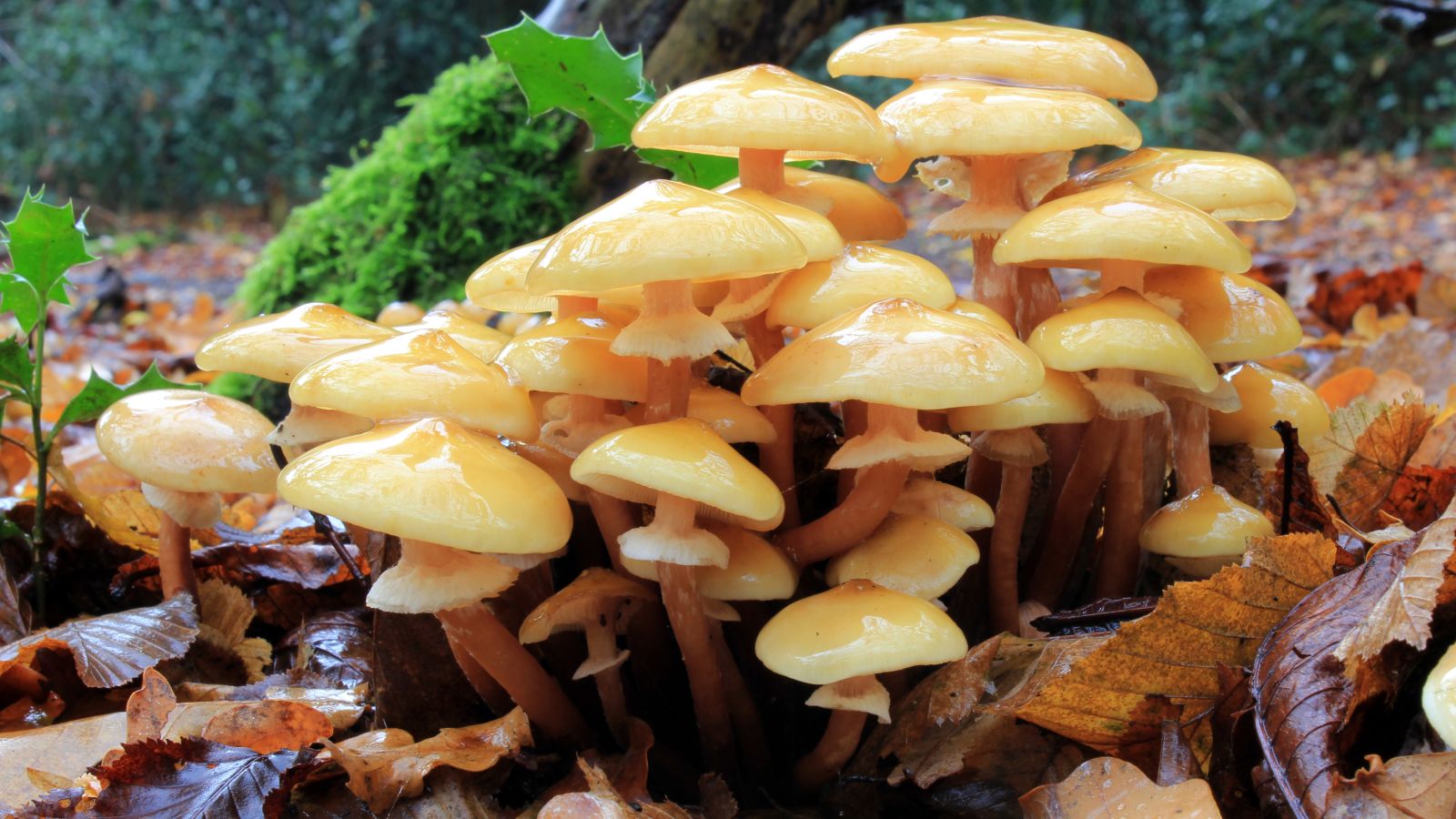What is larger than a whale and bigger than an elephant? A mushroom! Armillaria ostoyae, commonly known as the honey mushroom, is bigger than both animals and is considered the largest and oldest organism on Earth. The mushroom covers 3,726563 m2 of Malheur National Forest, Oregon, and is estimated to be around 8,650 years old.
Mushrooms are not just the stem-and-cap that we see on the surface; this is only a small part of an underground network of tendrils called mycelium. These tendrils can feed on soil, decaying plant matter, or wood, depending on the mushroom species. The massive Honey mushrooms have thick black tendrils called rhizomorphs, the networks of which can extend miles through the soil seeking wood to eat. Scientists think that the rhizomorphs are what enable a single Armillaria organism to grow so big. On the surface, you can see two complete different mushrooms several yards from each other; however, they are really the same entity underground.
Researchers examined Armillaria rhizomorphs and noticed that the same networks of genes are active in both the fungus’ rhizomorphs and its mushrooms. They suggested that Armillaria could have gained its rhizomorphs—and accordingly its ability to spread so wide—by co-opting genes originally used to grow mushrooms. The rhizomorphs may be akin to mushroom stems that failed to sprout and grow a cap; instead it grew long and thin underground.
The fungus was examined more closely by researchers when Catherine Parks, Scientist at the Pacific Northwest Research Station in La Grande, Oregon, heard about a big tree die-off from root rot in the forest east of Prairie City. Parks collected root samples from 112 trees and recognized the fungus through DNA testing. By comparing the 112 samples, she determined that 61 were from the same organism, meaning a single fungus had grown bigger than anything anyone had ever described before.
Upon examining the roots of some affected trees in the forest, she found something similar to white latex paint, which draws water and carbohydrates from trees. This act kills the surrounding trees because the Armillaria attaches itself to the roots of the trees via hyphae-fine filaments that tangle together and leak digestive enzymes. The fungus has the ability to extend rhizomorphs, which bridge gaps between food sources and expand the fungi perimeter. Essentially, the mushroom will feed off the tree roots, in the process killing the trees it is attached to.

The honey mushroom exists in other places, such as Michigan and Germany; however, Oregon’s mushroom is the largest ever measured. Scientists who study this species of fungus assume that the huge size may be a function of the dry climate in eastern Oregon. Spores have a hard time establishing new organisms, making room for the old-timers to spread; without competition from other specimens this enormous Armillaria has been able to grow and spread unchecked.
References
independent.co.uk
nationalgeographic.com.au
smithsonianmag.com